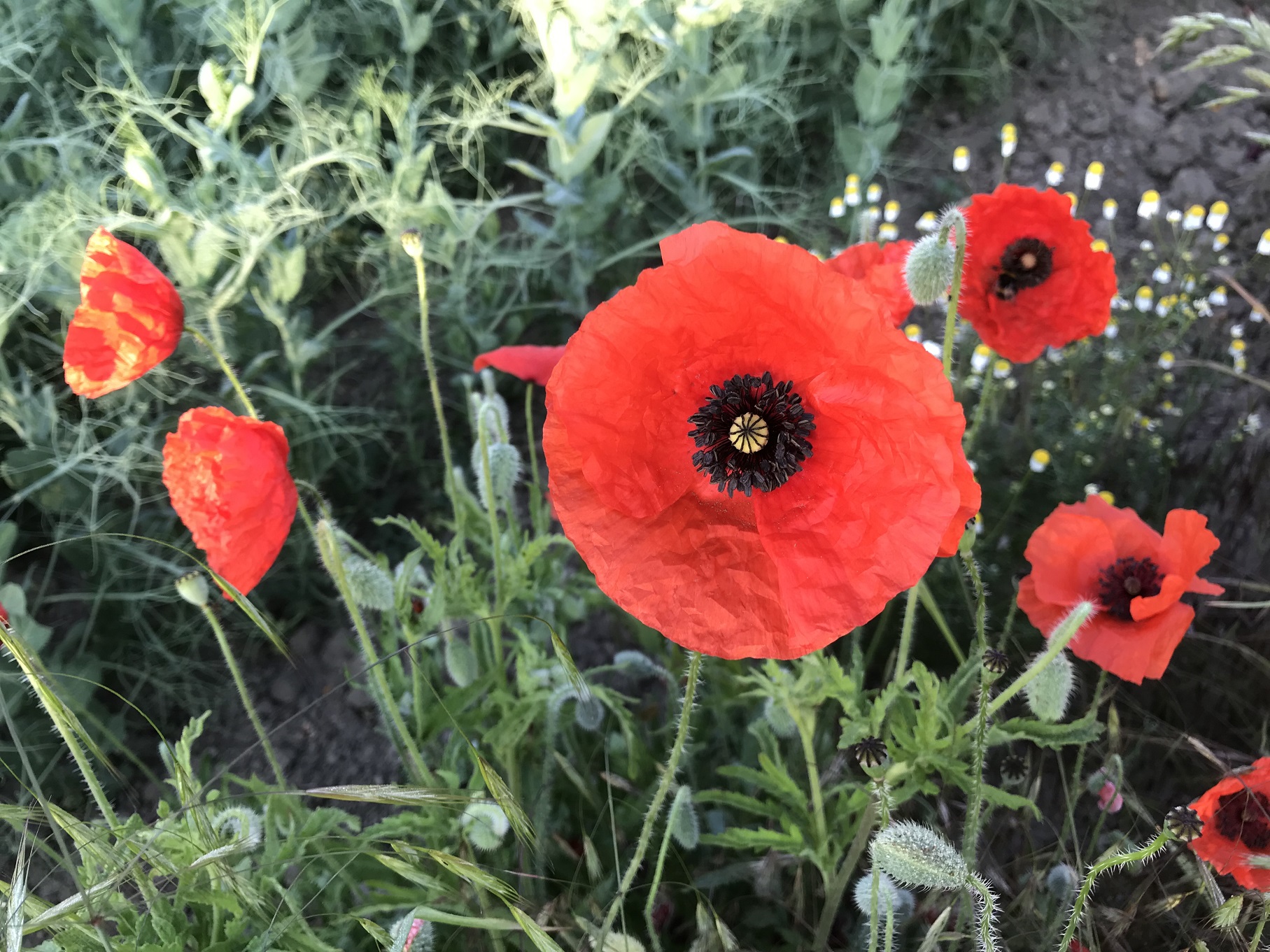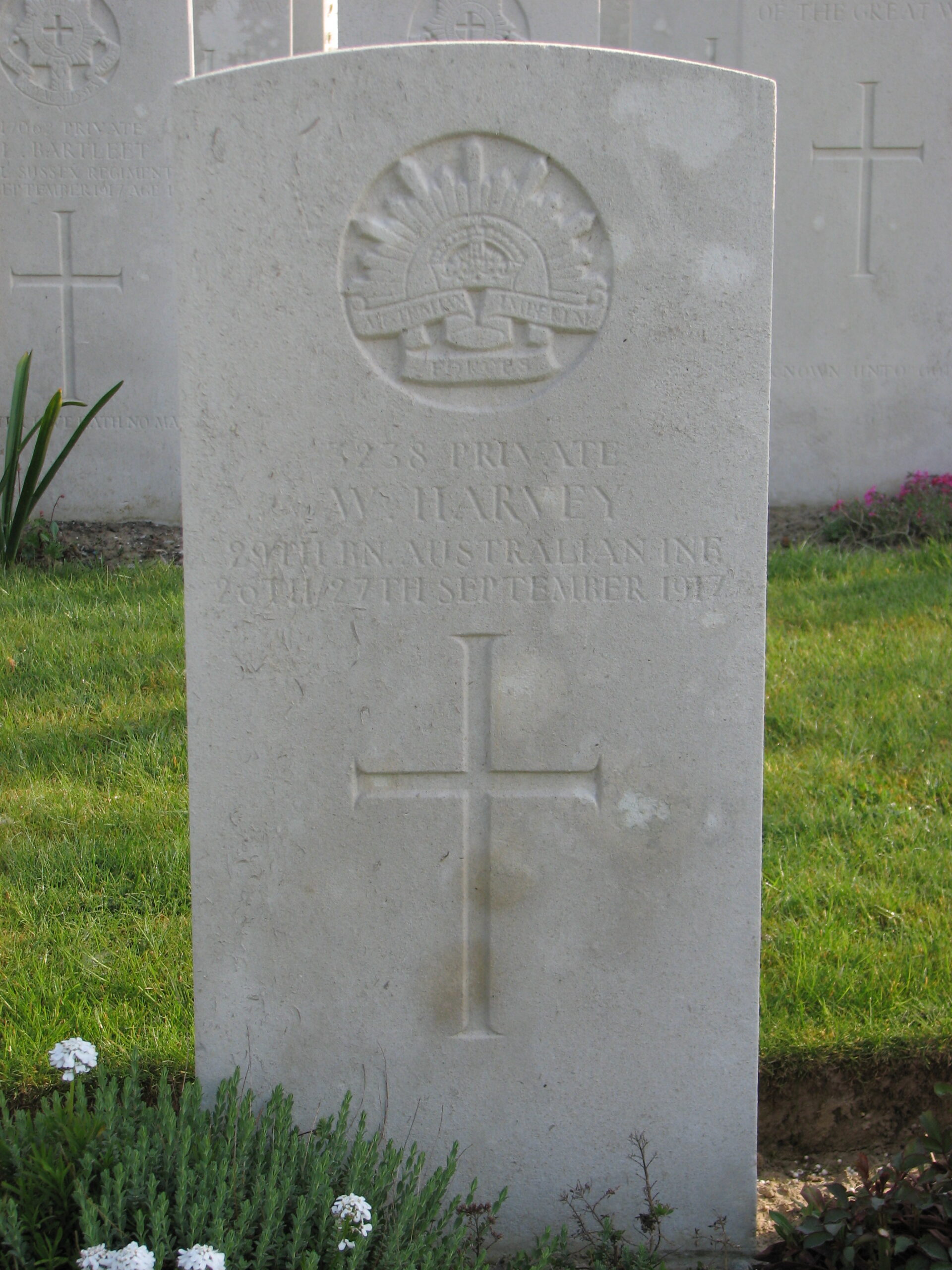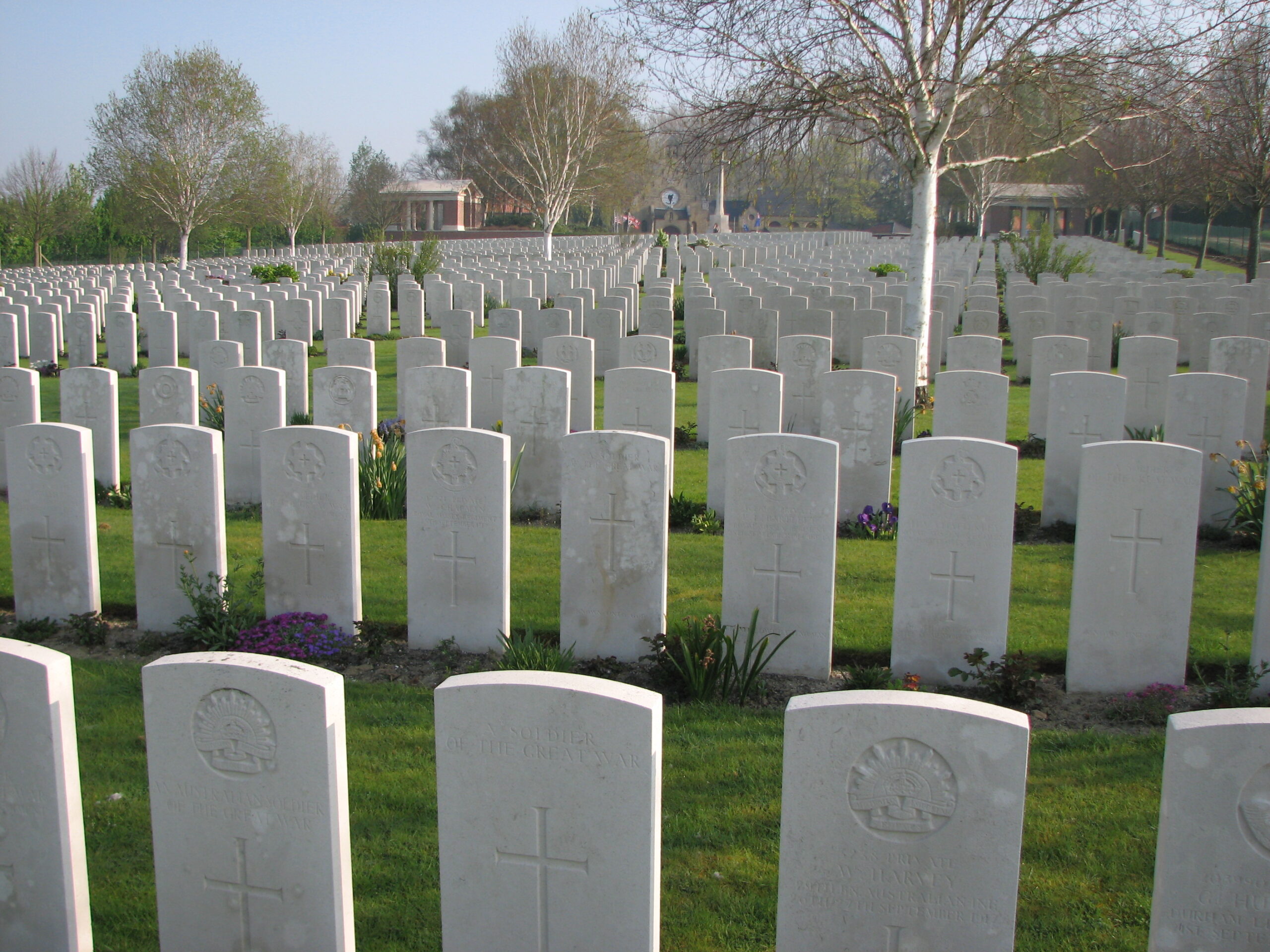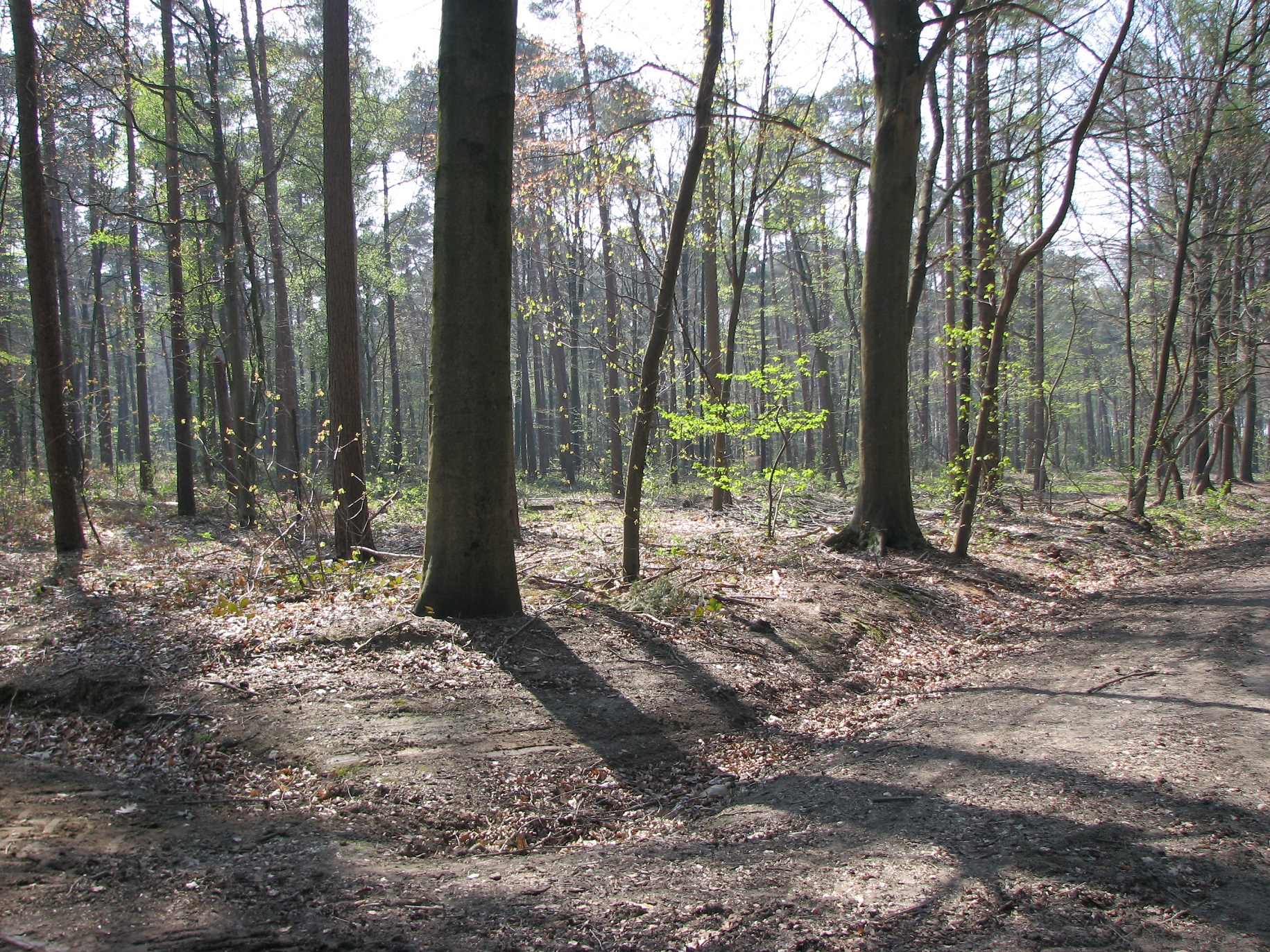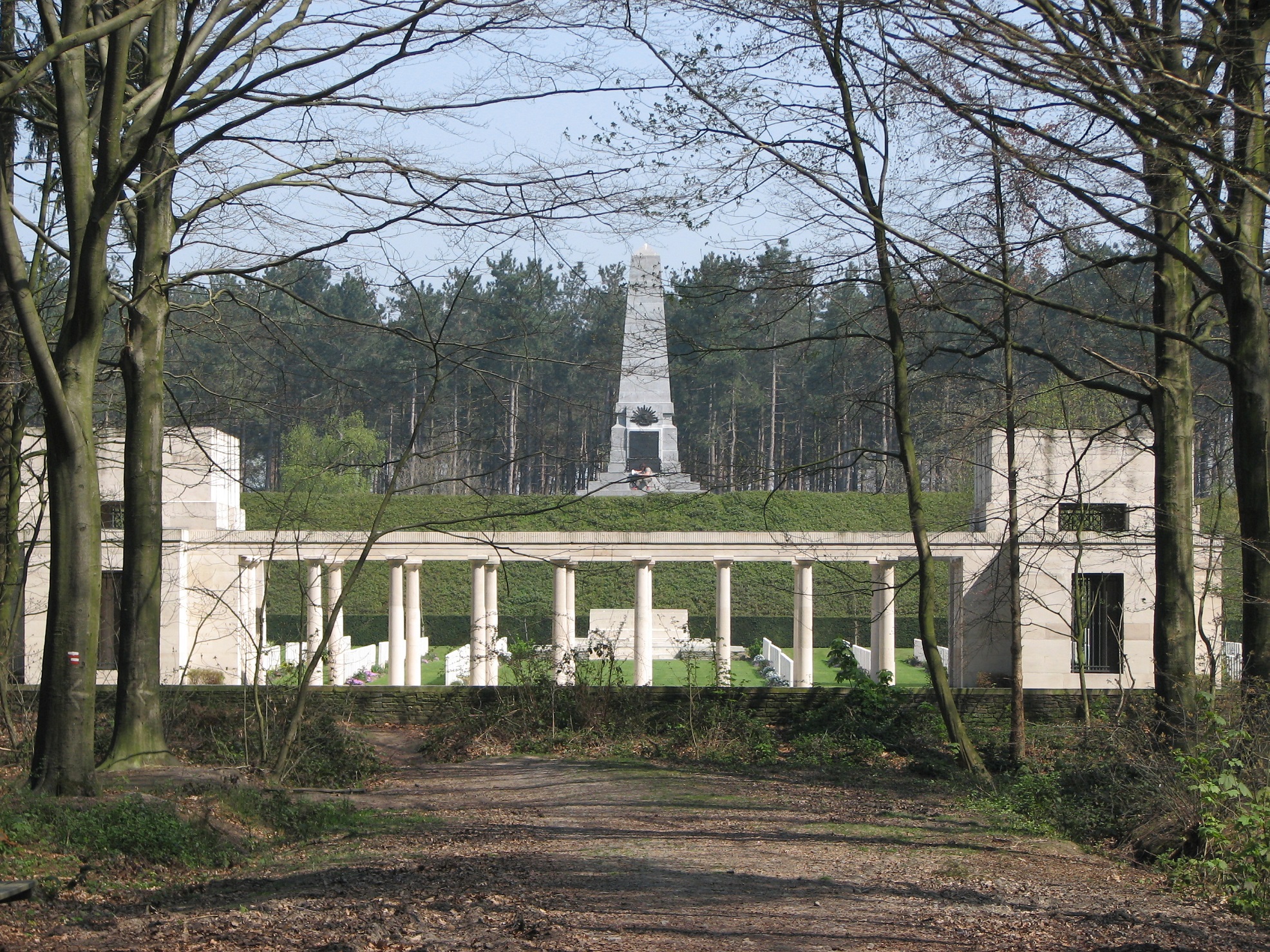Walter Harvey (1890 - 1917)
Having emigrated to Australia before the War, Walter volunteered to join the Australian Imperial Force in 1916. He served on the Western Front and was killed in Polygon Wood during the Third Battle of Ypres.
- 37
- Died in the Great War
- 51.973697, 1.044482
Details
| Name: | Walter Harvey |
| Service: | Australian Imperial Force |
| Unit: | 29th Battalion |
| Regimental Number: | 3238 |
| Rank: | Private |
| Date of Death: | 26th to 27th September 1917 |
| Age: | 27 |
| Buried: | Plot XIII, Row D, Grave 11, Hooge Crater Cemetery, Near Ieper (Ypres), Belgium. |
Family Background and Early Life
Walter Harvey was born in Washbrook on 3rd March 1890, the fourth child of George and Roseanna Harvey.
At the time of Walter’s birth George, who was originally from Copdock, was a Farm Labourer. He had married Roseanna Harvey from Ipswich in 1883, and their marriage produced 3 boys and 3 girls,
Shortly after Walter’s birth the family moved to Belstead, where George was employed as a Shepherd.
After leaving school, Walter followed in his father’s footsteps and found employment as a Shepherd.
The Harvey family including Walter and his 2 younger siblings moved to East Bergholt in the early autumn of 1910. George was employed as a Farm Baliff by the Eley family, and the Harveys moved into Home Farm on what was then called East End Road (now called the Mile Straight).
Australia
At some point after April 1911, Walter travelled to Australia in search of a new life. Due to the vagaries of the emigration records, the exact date that Walter left England is not known for certain, however there is some evidence to suggest that it may have occurred in 1913.
As a Dominion of the British Empire, Australia automatically went to war with Germany with the British Declaration on 4th August 1914. It is perhaps forgotten today that many of those from the dominions – quite probably the majority – considered themselves British, either because they were born in the United Kingdom, or had close family links there.
The outbreak of the Great War was greeted there with tremendous enthusiasm, and both the Prime Minister and the Leader of the Opposition pledged their full support for the Mother Country. Shortly afterwards, they formed the Australian Imperial Force (AIF), which was to be the main expeditionary force of the Australian Army.
By the end of the Great War. The A.I.F. had earned a reputation as a formidable fighting force, often being used as shock troops. However, it came at a cost: From a population of less than 5 million, 416,809 men enlisted; of those more than 60,000 were killed and 156,000 wounded, gassed, or taken prisoner.
Volunteers to join the A.I.F.
Walter volunteered to join the A.I.F. on 20th January 1916, at Melbourne, Victoria. His surviving Service Record tells us that the 25 year old Walter was 5 foot 7 ¼ inches tall, weighed 168 lbs, with blue eyes, brown hair and a fair complexion. The Service Papers also reveal that Walter had been employed as a gardener, before he decided to join up.
Walter undertook his initial training at Geelong Camp, and later at Broadmeadows Camp, west of Melbourne. On 4th July 1916, he sailed from Melbourne, finally disembarking at Devonport in England on the 22nd of the following month. After a further period of training at Larkhill on Salisbury Plain, Walter was sent to France on 13th November.
Like most soldiers arriving in France at this point in the War, Walter was first sent to a Base Depot – in his case, it was the Australian Divisional Base Depot at Etaples, on the Channel coast. Just over a week later, Walter was posted to the 29th Battalion of the A.I.F., part of the Australian 5th Division. 1 The 29th Battalion A.I.F., had been in France since June of 1916, and the following month had been involved in the Battle of Fromelles.
Wounded
The first few months of Walter’s time with 29th Battalion were spent in the Somme Sector. The Battle of the Somme had just ended, and the Battalion took their turn in manning the front line between the villages of Gueudecourt and Lesboeufs.
On 2nd March 1917, the 29th launched a bombing attack against Sunray Trench, north-east of the village of Le Transloy. Though successful, the Battalion suffered a number of casualties including Walter, who was wounded in the left leg.
After a spell at a Convalescent Depot in Rouen, and then Base Depots in both Rouen and later Etaples, Walter re-joined the 29th Battalion on 21st April.
Third Battle of Ypres
The Battalion spent much of the summer either in training, or engaged in working parties. On 31st July, the British had launched a major offensive near the Belgian town of Ypres, destined to last until well into November. History now knows this offensive as the Third Battle of Ypres (or more commonly the Battle of Passchendaele.
Between 17th and 24th September, the 29th Battalion moved towards the Ypres Salient in stages. Two Australian Divisions – the 4th and 5th (including the 29th Battalion) – were tasked with completing the capture of Polygon Wood, approximately 4 miles east of Ypres.
By this time, Polygon Wood was no longer a wood, for after nearly 3 years of shelling none of the trees survived but their mutilated remains were the location for several German bunkers. It was also a location of great strategic importance, for inside the Wood was an old rifle butte (effectively a small hill) – used in the nineteenth century for musketry training – which dominated the surrounding, flat landscape. 2 After the War, the 5th Australian Division decided that the butte would be the most appropriate place to erect their Memorial. It now stands on top of the landscaped butte – a fitting testament to the 5th Australian Division’s role in the capture of Polygon Wood.
The Australian infantry started to advance at 5.50 a.m. on 26 September 1917, moving forward behind a heavy artillery barrage. After heavy fighting, they secured most of their objectives, including the butte, and were able to consolidate their gains despite a number of German counter-attacks.
This victory came at a price, and the Australians suffered nearly 5,000 casualties in the fighting.
One of those killed in the fighting was Walter, he was 26 years old. Walter’s official date of death is given as between 26 and 27 September 1917, which suggests that no one from his unit saw him fall, and his absence was only noticed the following day during a Roll Call.
Walter was buried in Polygon Wood, close to where he fell.
Postscript
After the War as part of a move to bring in the dead from isolated graves, and some of the smaller cemeteries, Walter’s body was exhumed and reburied in a permanent military cemetery located approximately 2 miles away, called Hooge Crater Cemetery. He rests there still.3 Another East Bergholt man is also buried in Hooge Crater Cemetery. Ernest Jackson, who lived near High Trees Farm, had been killed in action on 4 October 1917, just south of Polygon Wood. He was 26 years old, and left a wife and 5 children.
Copyright © Mark Ashmore, 2024
- 37
- Died in the Great War
- 51.973697, 1.044482

